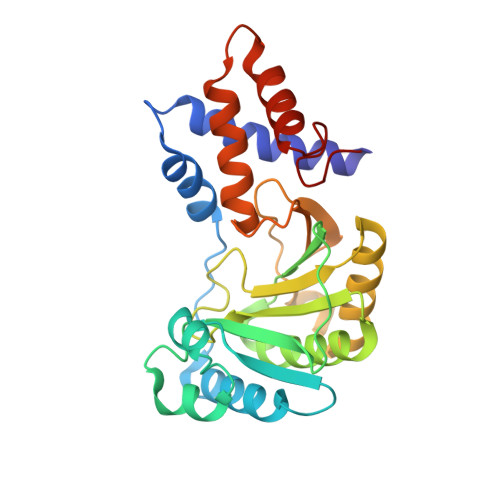Crystal structure of the effector protein HopA1 from Pseudomonas syringae
Park, Y., Shin, I., Rhee, S.(2015) J Struct Biol 189: 276-280
- PubMed: 25681297
- DOI: https://doi.org/10.1016/j.jsb.2015.02.002
- Primary Citation of Related Structures:
4RSW, 4RSX - PubMed Abstract:
Plants have evolved to protect themselves against pathogen attack; in these competitions, many Gram-negative bacteria translocate pathogen-originated proteins known as effectors directly into plant cells to interfere with cellular processes. Effector-triggered immunity (ETI) is a plant defense mechanism in which plant resistance proteins recognize the presence of effectors and initiate immune responses. Enhanced disease susceptibility 1 (EDS1) in Arabidopsis thaliana serves as a central node protein for basal immune resistance and ETI by interacting dynamically with other immune regulatory or resistance proteins. Recently, the effector HopA1 from Pseudomonas syringae was shown to affect these EDS1 complexes by binding EDS1 directly and activating the immune response signaling pathway. Here, we report the crystal structure of the effector HopA1 from P. syringae pv. syringae strain 61 and tomato strain DC3000. HopA1, a sequence-unrelated protein to EDS1, has an α+β fold in which the central antiparallel β-sheet is flanked by helices. A similar structural domain, an α/β fold, is one of the two domains in both EDS1 and the EDS1-interacting protein SAG101, and plays a crucial role in forming the EDS1 complex. Further analyses suggest structural similarity and differences between HopA1 and the α/β fold of SAG101, as well as between two HopA1s from different pathovars. Our structural analysis provides a foundation for understanding the molecular basis of the effect of HopA1 on plant immunity.
Organizational Affiliation:
Department of Agricultural Biotechnology, Seoul National University, Seoul, Republic of Korea.














